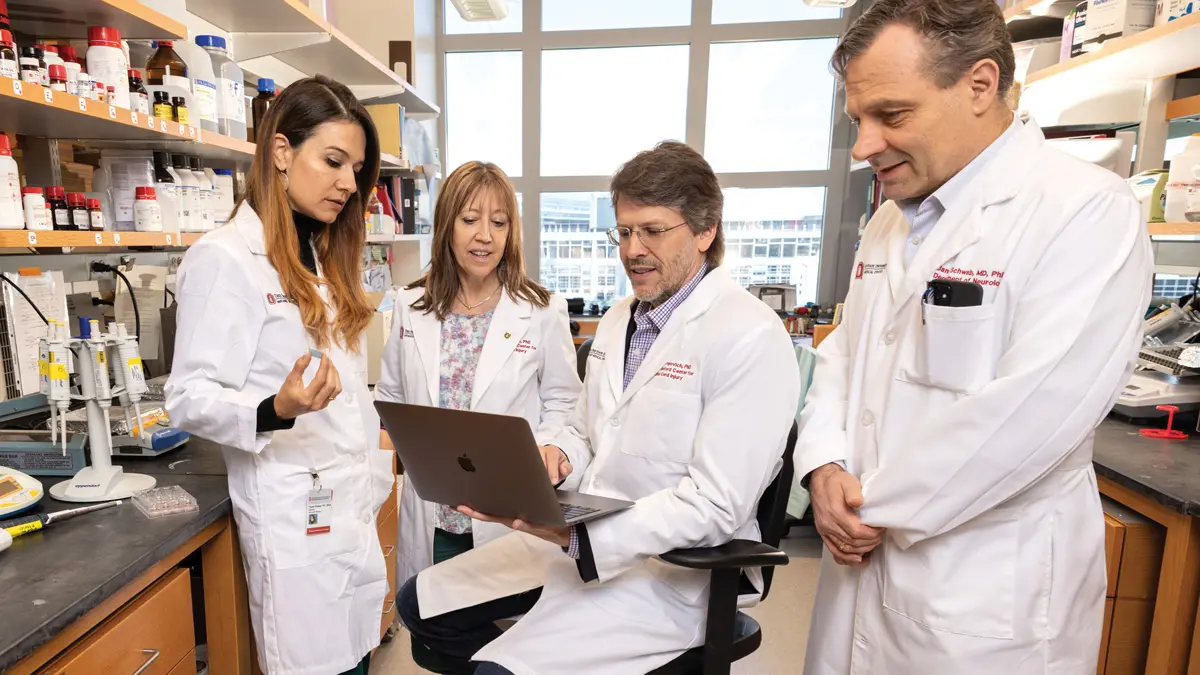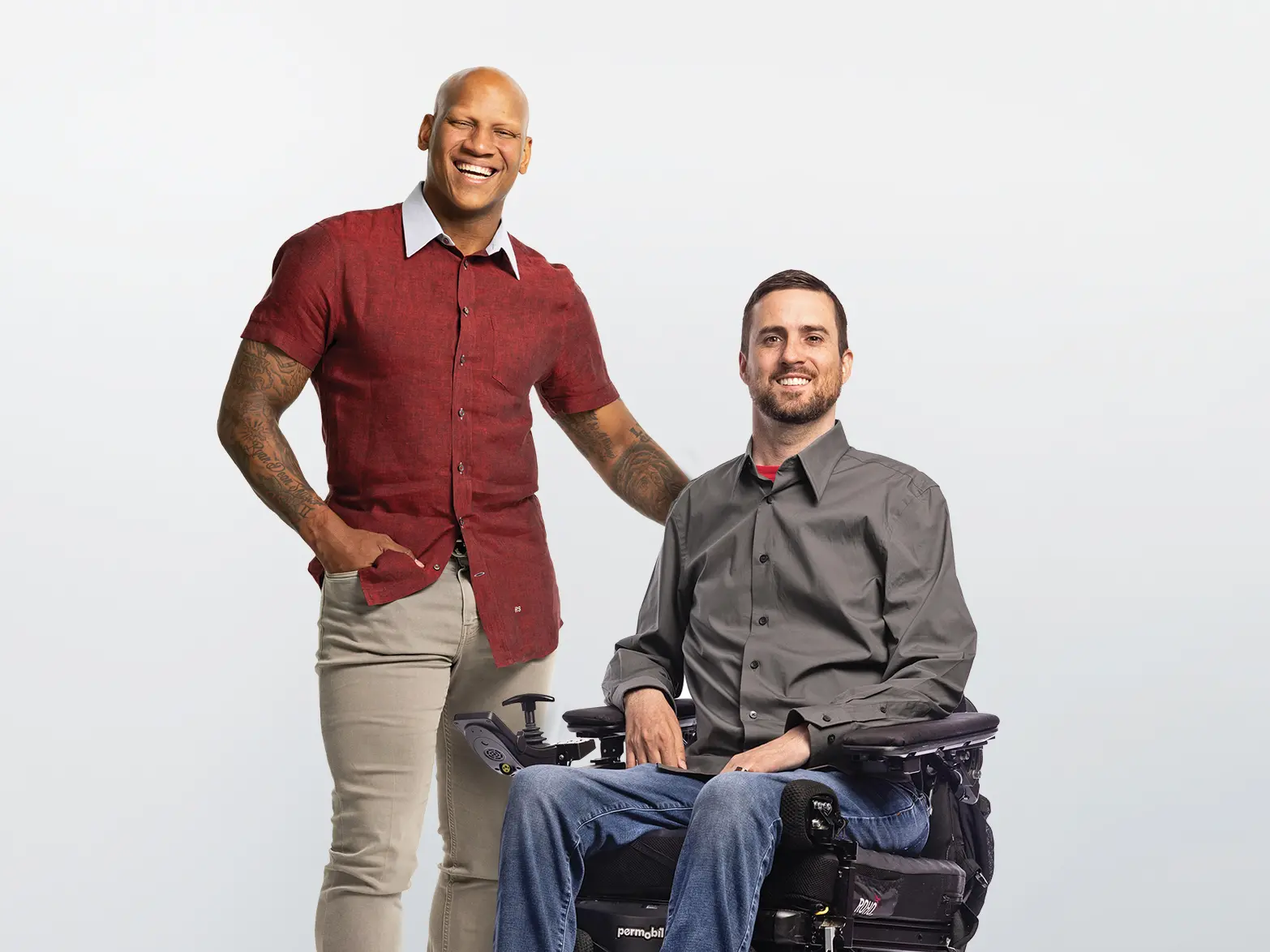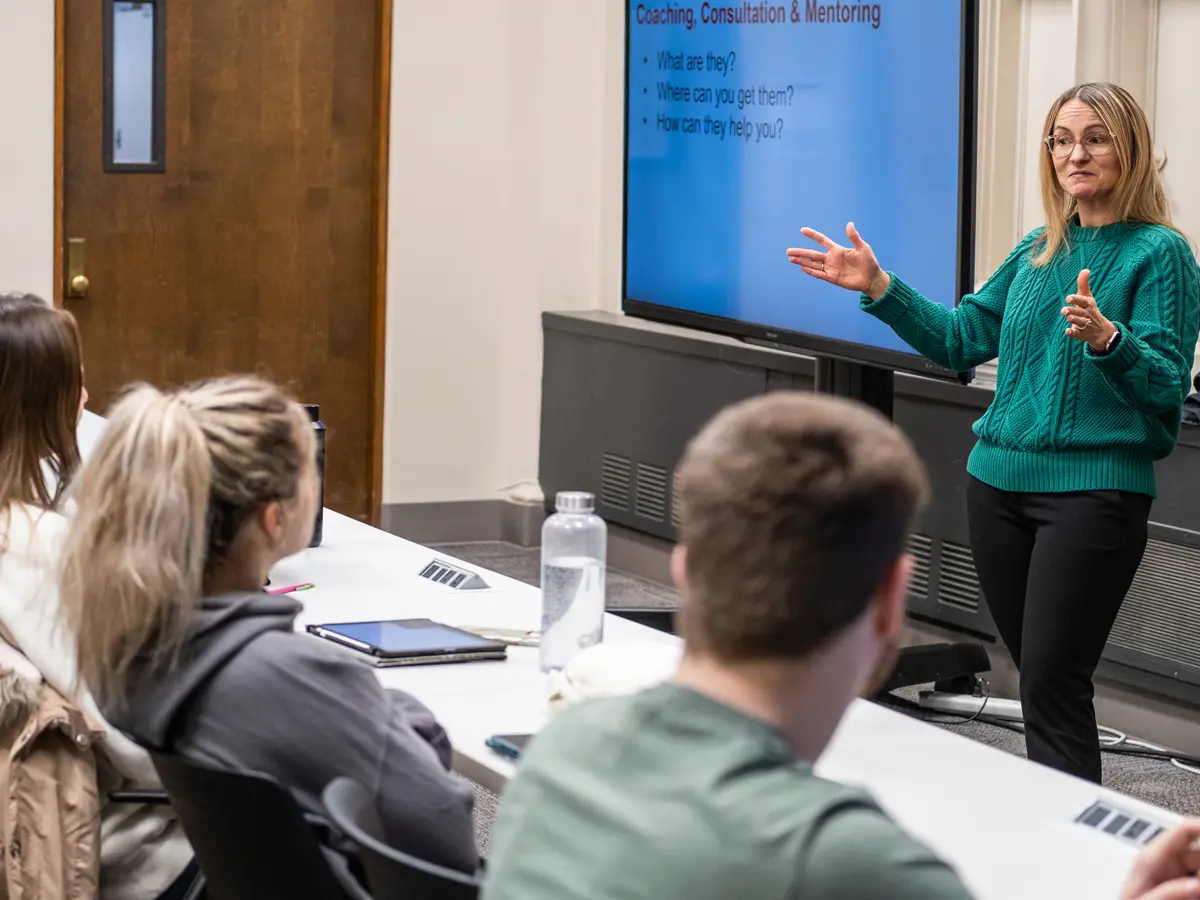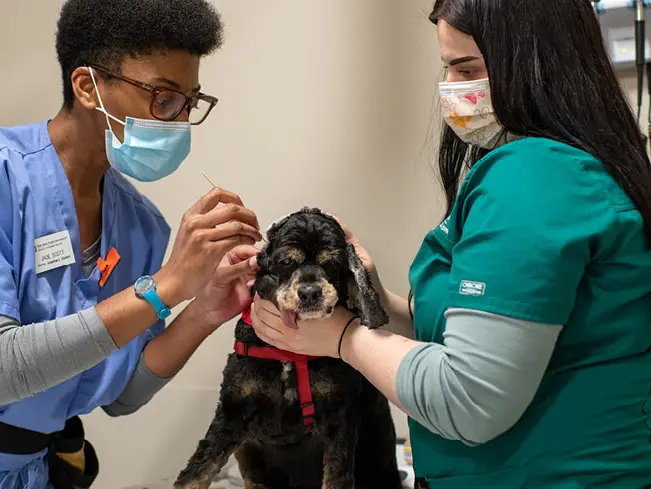Helping people who are paralyzed regain the ability to walk isn’t the only goal of Ohio State researchers studying spinal cord injuries. Our scientists also are searching for ways to improve the quality of these patients’ lives today.
This holistic approach is exemplified by the innovative research of the Belford Center for Spinal Cord Injury, which the College of Medicine and Wexner Medical Center created in 2018 with a gift of $10 million from the Belford Family Charitable Fund.
“We get to ask unique questions and pursue them,” says Phillip Popovich ’93 MS, ’95 PhD, executive director of the Belford Center and chair of the College of Medicine’s Department of Neuroscience.
Joining Popovich in leading a multidisciplinary team that examines how spinal cord injuries cause problems for a patient’s immune system are Director of Research Dana McTigue ’93 MS, ’95 PhD; Medical Director Jan Schwab; and Director of Clinical Research Ceren Yarar-Fisher.
“Any disease that you or I can get, spinal cord injury patients get, but they can get it faster and it’s usually more severe,” says Popovich, who also directs Ohio State’s Center for Brain and Spinal Cord Repair. This heightened risk of chronic disorders and diseases often causes rehospitalization or premature death.
Paralyzed patients expressed another key concern in a national survey that the North American Spinal Cord Injury Consortium conducted before the Belford Center launched. Ohio State researchers took note.
“Patients were asked: What is missing in spinal cord injury research? What do you need?” Yarar-Fisher says. “They answered that nothing has been done for them to improve their quality of life. For many, locomotion or walking wasn’t their priority; it was hand function, bowel function, cardiovascular health, sexual function.”
The Belford Center is now filling that research void. “We took the time to listen to what they really want,” McTigue says. “That resonated with the Belford family: to study what the community really wants us to work on.”
Focusing on science that can quickly improve patients’ lives, researchers study areas such as metabolism and the immune system. “When you injure the spinal cord,” Popovich explains, “you take offline the ability to coordinate communication from the body through the brain and spinal cord. Basically, it’s a break in a circuit, and that causes the immune system to not work well. Things start to become very dysfunctional.”
For example, people who have experienced a spinal cord injury are especially susceptible to pneumonia. That reality led Belford Center researchers to explore how the drug gabapentin influences systemic immunity. They also are partnering with Ohio State microbiologists and viral ecologists to research how spinal cord injury affects the gut microbiome.
“Part of the innovative strength of this center is having the multidisciplinary setup,” Schwab says. “We’re able to funnel research that is based on clinical observations down to fundamental mechanisms caused by spinal injury. This is our strength.”
In the gut microbiome study, a team is testing whether microbes can be manipulated to intervene and prevent changes in patients’ metabolism and cardiovascular, liver and immune function.
“The unique collaboration that we’ve built is going to allow us to study this in a very unprecedented way,” Popovich says. “Hopefully, it will lead to novel discoveries that can then make more significant and more rapid advances in the field.”
While widespread research on restoring patients’ ability to walk continues at Ohio State, the Belford Center’s unique advances promise to improve the quality of their lives.
“We all have our own unique backgrounds to bring together for this team,” McTigue says, “and we all have the same passion and goal: to help people with spinal cord injuries.”





